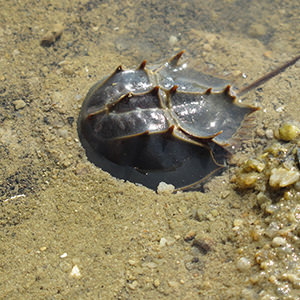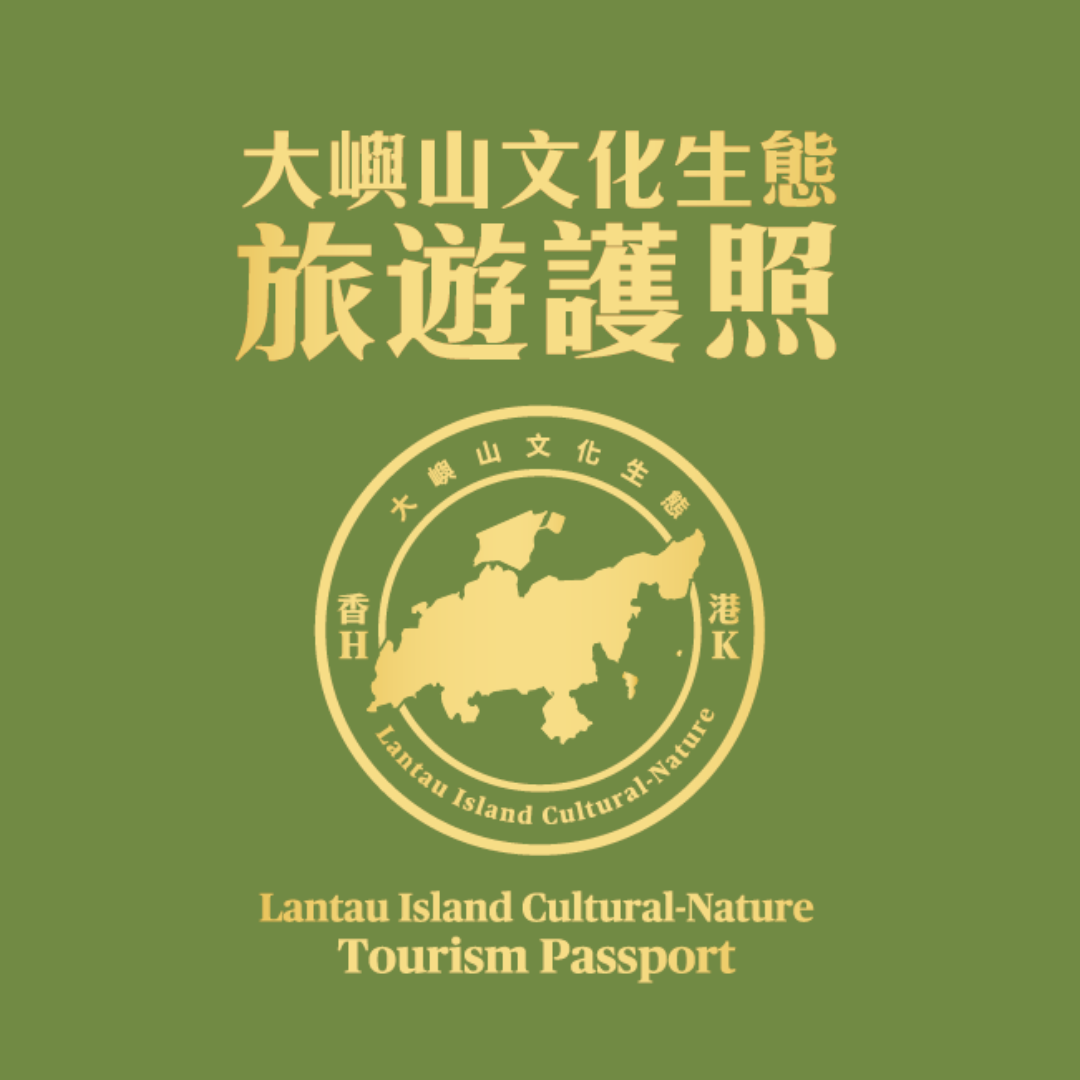Background
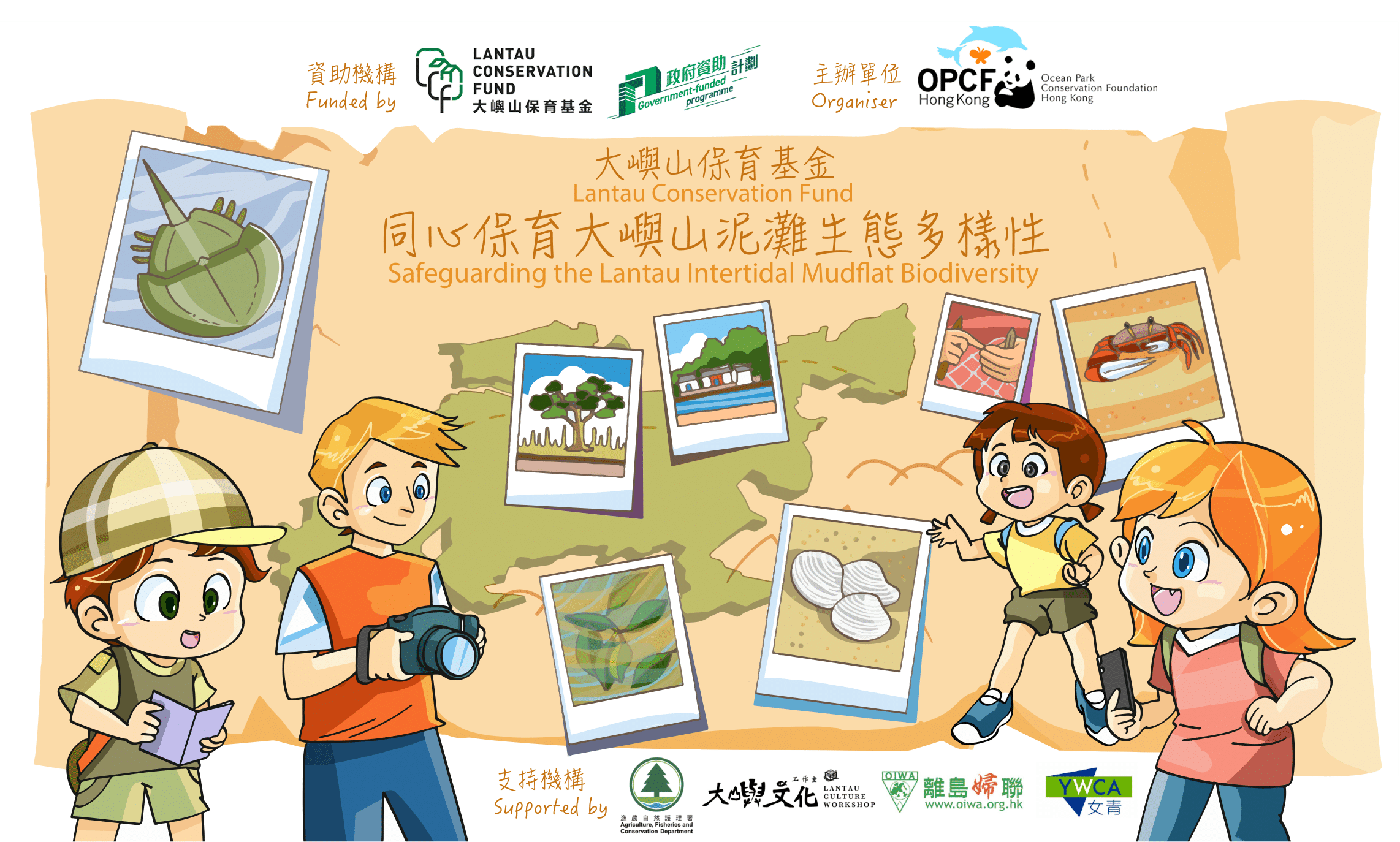
Intertidal mudflats are important components of the ecosystem. Numerous soft shores in Lantau supporting wildlife species of significant ecological and conservation value. These are home to different lifeforms including seagrasses, Mollusca, Arthropods, and endangered species Tri-spine horseshoe crab. By contributing different ecological role respectively, these species are making mudflats key habitat in Lantau. However, coastal development, pollution, and extensive human activities have led to the degradation and even disappearance of mudflats. Horseshoe crabs, which spawn and grow up on mudflats, have declined significantly with a 90% population decline in some mudflats in Hong Kong between 2002 and 20091.
The Ocean Park Conservation Foundation, Hong Kong (OPCFHK), with funding from the Lantau Conservation Fund (LCF) and support from various partners, is raising awareness among the public— particularly Lantau Island residents, students, fishermen, and tourism operators—about the ecological importance of intertidal mudflats through educational and community engagement activities. OPCFHK is also encouraging students and the public to participate in citizen science surveys to deepen their understanding of the intertidal mudflat ecosystem and its biodiversity. Tung Chung Bay, Shui Hau, Pui O, and Tai O are four key locations covered by this project. By collaborating with the public and community groups on Lantau Island, the project promotes best practices of outdoor activity to ensure the sustainable use of mudflats and provide in-situ protection for the ecosystem.
The importance of the intertidal zone
The intertidal zone is a coastal area that is submerged by seawater during high tide and exposed during low tide. It plays a crucial role in buffering the direct impact of waves towards coastline and offers unique ecological values. Expansive mudflats and mangrove forests protect the coastline from erosion during storms, while mangroves and seagrass beds provide fallen leaves as food for species such as shrimp and crabs. The intertidal zone is also a nurturing ground for various other organisms, ranging from small gastropods (like snails), arthropods, and fish, to large mangrove communities.
Four key intertidal mudflats/sandflats
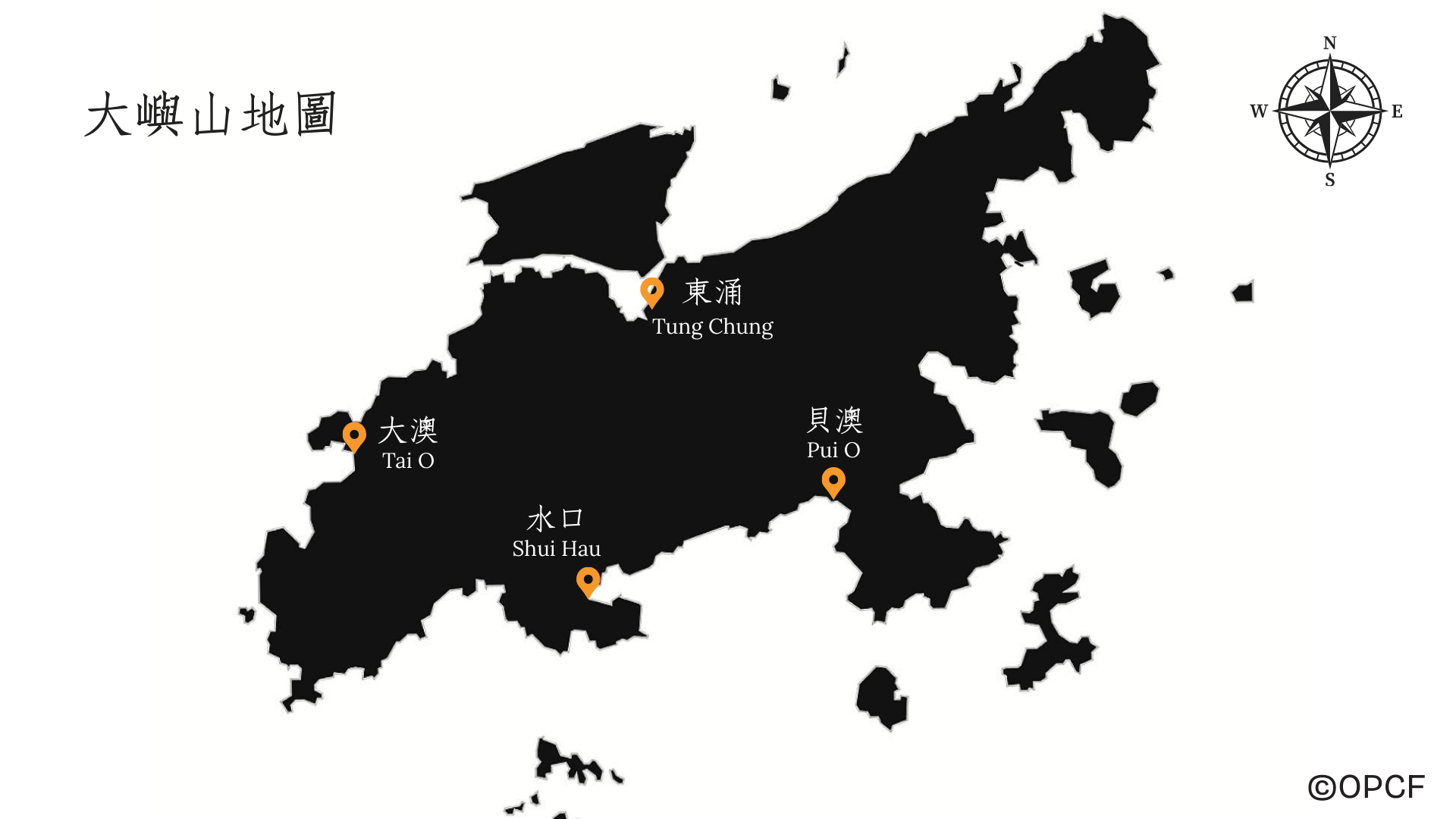
Tung Chung Bay
Tung Chung Bay is a calm and expansive inner bay mudflat. It boasts a variety of microhabitats, including mangroves, soft muds, oyster reefs, and rocky shores. The natural stream, Tung Chung River, connects the sea and brings freshwater resources from the surrounding landscapes to Tung Chung Bay. Additionally, the airport in Chek Lap Kok blocks most of the waves from the sea, creating a calm coastal environment. As a result, a large amount of silt accumulates, forming extensive and soft mudflats in the southwestern part of Tung Chung Bay. Despite this, the southeastern part of the bay still features numerous mangrove forests, mixed gravel and sandy mudflats, and various estuaries, enhancing its ecological significance. The mudflats of Tung Chung Bay are crucial breeding grounds for both the tri-spine horseshoe crab and the mangrove horseshoe crab. It also provides food for many waterbirds and serves as a substrate for mangroves and seagrass. These habitats contribute to energy cycling and coastal stability, making Tung Chung Bay an important ecological area.
.webp)
Tai O
Tai O is located at the westernmost tip of Lantau Island, nestled at the foot of steep mountains. It is renowned for its stilt houses built along the riverbanks and its quaint fishing village charm. The annual Dragon Boat Water Parade during the Dragon Boat Festival is a significant cultural event that showcases Tai O's traditional fishing village heritage, adding vibrancy to this small village.
In addition to its cultural and historical significance, Tai O's ecological value is also noteworthy. Mudflats can be found near Shek Tsai Po and in front of Yeung Hau Temple, nurturing juvenile Acetes spp., gastropods, and other marine organisms. Additionally, the compensatory wetlands, transformed from salt fields, comprise mangroves, fish ponds, and marshes, forming diverse microhabitats that serve vital habitats for waterbirds, wetland-dependent birds, and migratory birds.
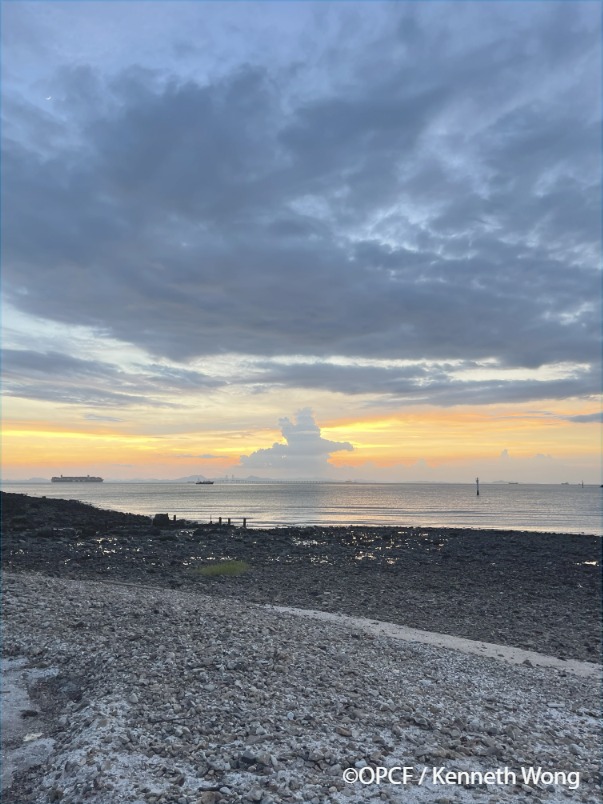
Shui Hau
Shui Hau is a vast, flat sandflat stretching over a kilometer. This sandflat is adjacent to freshwater outlets and serves as a breeding ground for horseshoe crabs. The surrounding habitats support a high diversity of animals, including mudskippers and fiddler crabs under the mangroves, dragonflies and frogs in the streams, and even the endemic Romer's tree frog that is unique to Hong Kong2. However, clam digging activities in Shui Hau, such as large Asiatic hard clams and venerid clams, may impact the ecosystem negatively. Overseas studies have indicated that unregulated clam digging not only alters the benthic composition and mudflat density3 but also risks trampling juvenile horseshoe crabs and leading to accumulation of refuse4.
.png)
Pui O
Pui O is located in the eastern river valley of the southern district of Lantau Island. The sandspit and lagoon at the river mouth attract a large number of intertidal organisms to gather and forage. Over 180 bird species, including the Brown Fish Owl and Malayan night heron, have been recorded here5.
Due to its geographical location, the sandflat at Pui O experience larger wave surges, giving them unique ecological characteristics compared to other intertidal mudflats. For example, clams of the genus Donax, which feed on organic matter and microorganisms, are known to move actively in wave surge environment or quickly burrow into the sand to avoid predators. As a result, you may encounter highly active clams in this area6.
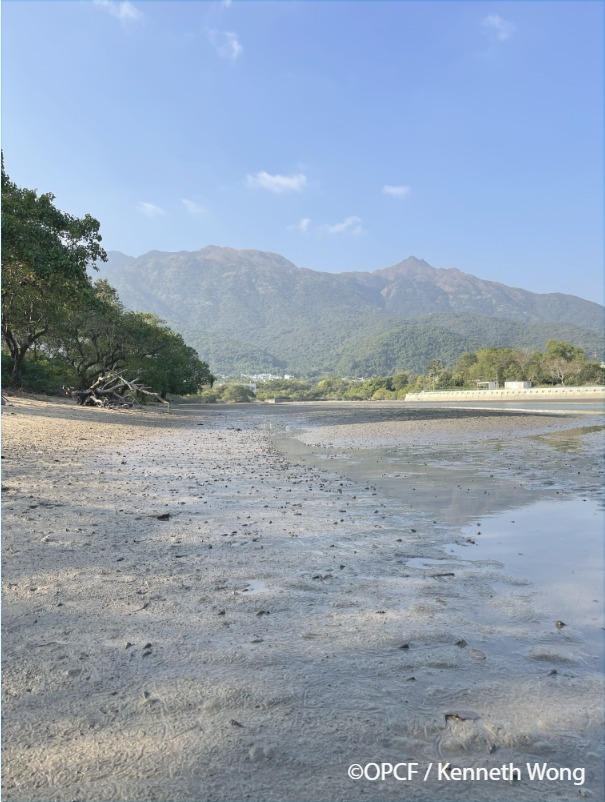
Mudflat Organisms of Lantau Island
Mudflats are located in the intertidal zone and at the junction of saltwater and freshwater, also known as brackish water, with clay serving as the water substrate component. The tidal cycle of mudflats significantly influences the occurrence of organisms, the degree of wave erosion, and the size of sediment particles. Mudflats host a rich variety of species whose distribution depends on factors such as food resources, their ability to adapt to extreme temperatures and dryness, as well as interactions such as predation and competition among organisms7.
|
Gastropods and Bivalves The surface and interior of mudflats are teeming with many inconspicuous aquatic organisms, such as gastropods and bivalves. Gastropods that feed on detritus or algae help enhance nutrient and material cycling within the mudflat habitat. Meanwhile, the filter-feeding characteristics of most bivalves improve the aeration of the clay, playing a crucial role in the mudflat ecosystem and food chain8. |
|
|
Gastropods – Batillaria genus The very tall-spired snail, Batillaria, has a slender shape and is commonly found in mid- or low-shore areas of sheltered mudflats. Highly adaptable, they feed on the biofilm that covers sand grains, and detritus. At Shui Hau, you can see large groups of Batillaria slowly moving, and leaving trails during low tide. |
|
|
Gastropods – Nassarius genus A lightly ribbed snail with a long siphon. Nassarius is a scavenging snails that can locate its food through chemicals released by dying and dead organisms into the water. |
|
|
Bivalves – Anomalocardia genus Anomalocardia have sculptured shells that enable them to maintain their position in the sand. A pair of siphons helps filter the water for plankton. |
 |
The mudflats of Lantau Island are home to a diverse range of organisms. The distribution and population of these flora and fauna are closely related to the micro-habitat. This project includes simulated surveys in primary school mudflat ecosystem education workshop and field investigations in mudflat biodiversity surveys, allowing students and members of the public of different ages become citizen scientists and gain a deeper understanding of various mudflat organisms. Citizen scientists can even obtain firsthand data and learn to analyse survey results.
|
Horseshoe crab Horseshoe crabs belong to an archaic group of marine animals that has existed since the late Ordovician period, approximately 475 million years ago. Their form has remained largely unchanged, which is why they are often referred to as "living fossils". Mature horseshoe crabs pair up and return to the intertidal zone to lay their eggs, while juvenile horseshoe crabs feed and grow in the intertidal zone until they mature. Once they reach adulthood, they migrate to live in shallow waters. |
|
|
Tri-spine horseshoe crab (Chinese horseshoe crab) |
|
| Mangrove horseshoe crab Scientific name: Carcinoscorpius rotundicauda Conservation status: Data deficient (DD, IUCN Red List) Spawning period: April to September Length: 30-40 cm Life expectancy: About 10-15 years Preferred habitat: Mudflat Characteristics: Telson cross section is round. Body may contain tetrodotoxin (TTX)9.
|
|
Due to threats such as over-exploitation, coastal development, and pollution, the population of horseshoe crabs has long been a major concern. By participating in mudflat cleanups and guided tours, the public can increase their awareness of the threats faced by mudflat habitats, address the issue of waste accumulation, and actively engage in habitat restoration efforts. The "Juvenile Horseshoe Crab School Rearing Programme" has also trained many horseshoe crab conservation ambassadors among secondary school students who are involved in rearing the crabs and promoting conservation messages.
|
Mangroves Mangroves generally refer to the communities of trees or shrubs that grow along coastlines or in (sub)tropical estuaries. The term "red" in the Chinese name for mangroves comes from the tannins found in the Rhizophoraceae family, which were historically used to produce red dye. On Lantau Island, you can find all eight true mangrove species found in Hong Kong. Mangroves play a crucial role in mudflat ecosystems. They provide shelter and habitat for various mudflat animals. Fallen and decomposing leaves from mangroves serve as food for mudflat animals like sesarmid crabs, making them primary producers in the mudflat food web10. Conversely, organisms like snails, crabs, and worms that live around mangrove roots help aerate the soil while digging, aiding in leaf decomposition and reducing the impact of oxygen deficiency on mangroves. Additionally, mangroves have a high capacity for storing blue carbon, acting as carbon sinks that effectively mitigate global warming11. |
|
|
Kandelia obovata The most common mangrove in Lantau Island, and in all of Hong Kong. This species is believed to have greater cold tolerance and reproductive capacity compared to the Indian species (Kandelia candel)12. Kandelia obovata have the Chinese nickname “the water pen” as its hypocotyls resemble pen shafts hanging from the tree. |
|
|
Aegiceras corniculatum Both the Aegiceras corniculatum (commonly known as the black mangrove) and Kandelia obovata are viviparous plants. Their seedlings develop inside the fruit and begin to grow only after the fruit falls and the pericarp splits open. The petioles are red, while the black mangrove gets its name ”candle fruit” (in Chinese) from its fruit, which resembles a candle flame.
|
|
|
Bruguiera gymnorhiza The Many-petaled Mangrove has a high tannin content in its tissues, giving it an overall reddish hue. This is especially noticeable in its deep red calyx and pointed leaf tips, which are key identifying features. A large population can be observed in Tung Chung Bay. Sonneratia apetala The Sonneratia mangrove is an exotic species in Hong Kong, which was introduced to mainland China in the 1990s. It spread to the Deep Bay area through water dispersal, becoming a dominant species in some wetlands due to its rapid growth and strong vitality. It later expanded to the mangrove areas of Lantau Island. Because it competes with native mangroves for space and occupies open mudflats, reducing the foraging and living space for migratory birds and other mudflat organisms, management and control efforts may be needed.
|
|
Mangroves are crucial to the mudflat ecosystem. Through public seminars, people can gain a deeper understanding of the various mangrove species on Lantau Island and their relationships with other mudflat organisms.
School Education
|
With the support of City University of Hong Kong, students are able to rear juvenile tri-spine horseshoe crabs in schools. Through daily care and observation, they learn about the growth requirements and breeding techniques of this species, while also increasing their awareness of the conservation of horseshoe crab breeding grounds on Lantau Island. |
|
A workshop for primary students will teach them about Lantau's biodiversity and the need of habitat and species conservation. Apart from seminar, students will join interactive games to learn about horseshoe crabs and mudflat life, simulate mudflat surveys, identify environmental threats, and human impact on biodiversity. |
|
Community Engagement
Through the seminars, the public had the opportunity to gain an in-depth understanding of the mudflat ecology and diversity of Lantau Island, thereby enhancing public attention and that of Lantau's community stakeholders to the importance of their conservation. |
|
Students and local villagers are gathered to conduct survey at 4 key sites (Tai O, Shui Hau, Tung Chung Bay and Pui O), to record the distribution and abundance of species inhabiting the mudflat. Surveyors can practise survey techniques and develop scientific thinking by analysing data to understand the relationship between different mudflat microhabitats and species distribution. |
|
Through mudflat clean-up guided tours, participants can learn about the changes in the mudflat habitats of Lantau Island and observe how microhabitats and tides affect the mudflat ecosystem. By removing waste from the mudflats and mangrove areas, they can reflect on the impact of marine litter on these habitats. These tours also enhance personal interest in ecological conservation and foster awareness of waste reduction at the source. |
|
Mudflat Exploration Guidelines
- Keep the environment clean
Take your trash back to the city for proper disposal and recycling. Maintain cleanliness and hygiene in the mudflats, villages, and surrounding areas.
- Look; don't touch!
Observe the natural ecology without stepping on, touching, or damaging any plants or animals to protect their habitats.
- Do not disturb or feed wildlife
Avoid interfering with the natural behaviour of wildlife and do not feed them. This helps maintain ecological balance and prevents harm to both wildlife and humans.
- Explore quietly
Stay calm and quiet, avoiding loud noises and disturbances. This allows everyone to enjoy the tranquility of the natural environment and cultural landscapes.
- Check weather forecasts and real-time conditions
Review the weather forecast before setting out and avoid mudflat activities on unstable weather days. Stay aware of real-time weather changes during your activities and allow enough time to return to a safe place.
- Be aware of tides
Understand the timing of tidal changes and ensure you have enough time to return to safety. Avoid staying on the mudflats during high tide to ensure your safety.
- Follow guides or instructors
Participate in cultural or ecological tours and follow the explanations and recommendations of your guides. Learn how to explore and protect natural sites correctly.
Reference
[1] Li, H. Y. (2008). The Conservation of Horseshoe Crabs in Hong Kong (Master’s thesis). City University of Hong Kong.
[2] 守護大嶼聯盟。2015。水口百態 - 大嶼山水口生物記錄。
[3] Durán, L. R., & Castilla, J. C. (1989). Variation and persistence of the middle rocky intertidal community of central Chile, with and without human harvesting. Marine Biology, 103(4), 555–562.
[4] Williams, A. T., Randerson, P., Di Giacomo, C., Anfuso, G., Macias, A., & Perales, J. A. (2016). Distribution of beach litter along the coastline of Cádiz, Spain. Marine Pollution Bulletin, 107(1), 77–87.
[5] Li, C.H., Kong, P.Y., Chung, C.T., Tse, Y.L., Moulin, A.L and Yu Y.T. (2024). Baseline Study of Avifauna along South Lantau Coast with Application of Bioacoustics and Study of Human Disturbance (November 2021 to November 2023). The Hong Kong Bird Watching Society. Hong Kong.
[6] McIntyre, A. D., Morton, B., & Morton, J. (1984). The Sea Shore Ecology of Hong Kong. The Journal of Animal Ecology, 53(3), 1035.
[7] Peterson, C. H. (1988). Tidal flat ecology. An experimental approach to species interactions. Limnology and Oceanography, 33(5), 1229–1229.
[8] Cañada, M. C. B., Rotaquio, Jr., E. L., & Gallego, R. J. (2021). Spatial Zonation and Diversity of Bivalves and Gastropods in Mangrove Forests of Casiguran, Aurora. Open Journal of Ecology, 11(10), 645–663.
[9] Ngy, L., Yu, C.-F., Takatani, T., & Arakawa, O. (2007). Toxicity assessment for the horseshoe crab Carcinoscorpius rotundicauda collected from Cambodia. Toxicon, 49(6), 843–847.
[11] Alongi, D. M. (2020). Global Significance of Mangrove Blue Carbon in Climate Change Mitigation. Sci, 2(3), 67.
[12] Maxwell, G. S. (1995). Ecogeographic variation in Kandelia candel from Brunei, Hong Kong and Thailand. Springer EBooks, 59–65.



.png)
.png)

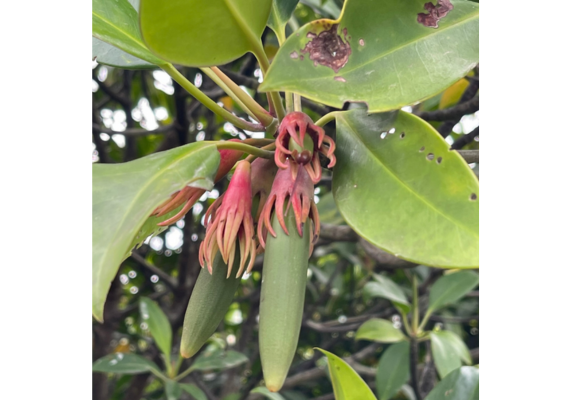



.png)








